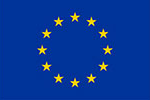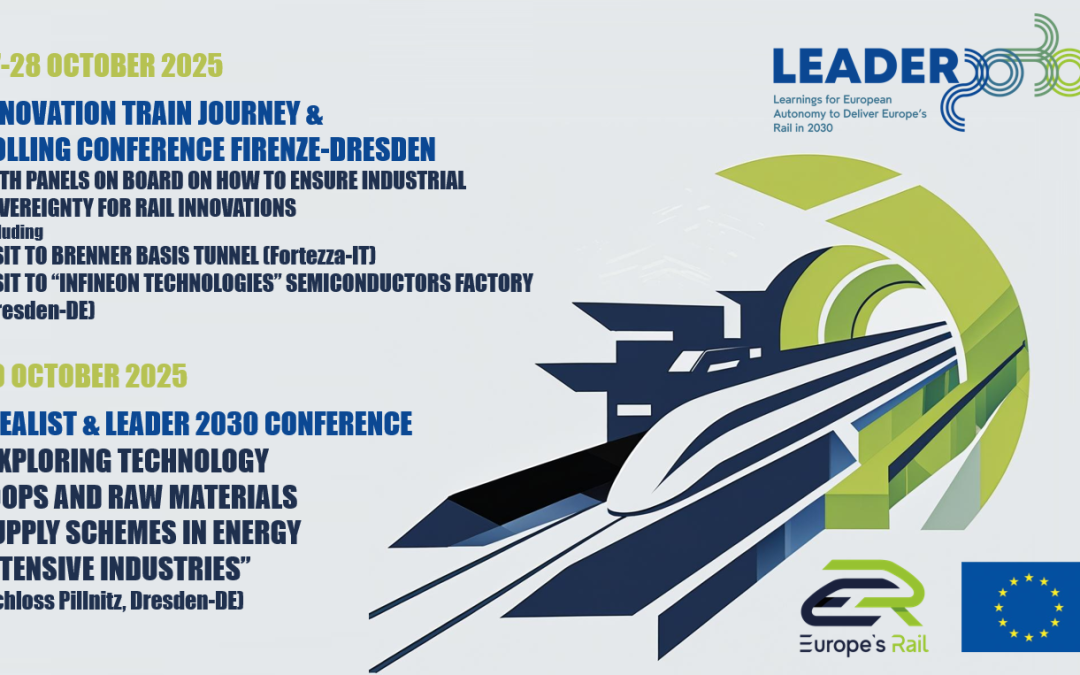How can we build on the progress made so far to make rail travel truly accessible, affordable and reliable for...
Deliverables published by the project
D10.1 Mapping against scope, specification of technical enablers, high-level use cases, high-level requirements, high-level design for demonstrators in WPs 11-18
The aim of FP1-MOTIONAL flagship project is to investigate innovative solutions for improving the rail network management planning and control, as well as multi-modal rail integration in Europe. The research and innovation outcomes of this project correspond to a number of Technical Enablers (TEs)) identified in the MAWP (Multi Annual Working Plan).
Deliverable 10.1 (D10.1) of FP1-MOTIONAL reports on the project achievements related to TEs 8 to 17 which are relevant to rail operations. This report covers the high-level requirements, alignment, design and use cases for 25 demonstrators relevant to these TEs based on a state-of-the-art analysis.
D2.4 – Demonstration Strategy
The purpose of Deliverable 2.4 “Demonstration Strategy” is to present a strategy, the guidelines and templates for the preparation and delivery of demonstrations planned in the second half of the FP1-MOTIONAL project ( Month 25 – Month 43).
The document explains the structure of demonstration phase ( four sub-phases: Specifications, Implementation, Execution and Evaluation) and provides the important elements of the selected demonstrations. The document also describes the interactions between Workstream 1 and Workstream 2 of FP1-MOTIONAL, as well as the collaboration with other Flagship Projects needed to support the delivery of the entire demonstration phase for the project.
D13.1 – Use case specification and requirement specification for disruption management
Deliverable D13.1 provides a detailed description and analysis of the main use cases for disruption management within the context of railway infrastructures based on the high level description and requirements described in D10.1.
The use case analysis provided in this deliverable covers involved actors, pre-conditions and post-conditions, inputs, interactions for use case implementation, the exchanged data structures, and a table of the functional and non-functional requirements and are relevant to the following FP1-Motional Technical Enablers (TEs) :
- TE 11—HMI for TMS based on User Experience (UX) Design and user input: The development of an HMI solution for the railway sector must consider UX design principles to reduce the workload imposed on operators when dealing with critical actions, decisions and alarms in control centers when managing disruptions and critical tasks.
- TE 13—Cooperative planning multi-actors within rail: Critical events and alarms occurring along a railway are not handled by a single operator but by many of them, who should be able to communicate effectively with each other and with other stakeholders, including emergency responders, to ensure that the incident is handled appropriately.
- TE 14—Integration of incident management and customer information, with IM and RU interaction and Decision Support for Disruption management (DSS) : Incident management in railway systems is a complex and challenging task that requires the skills and expertise of operators in control centers as well as many details and data to support the problem identification process, which calls for more integration of all the possible information sources.
The use cases described in D13.1 will be applied in the upcoming WP14 for the planned demonstrators as follows:
- Demo 10 – Collaborative DSS for efficient and effective disruption management: This demo is divided into three parts: first one showing how collaborative decisions can be supported by the decision support modules of TMS; the second part shows how a DSS can support the operators when performing complex procedures to reduce the workload and fatigue in critical scenarios while providing suggestions to optimize maintenance; and the last part deals with solving conflicts in rolling stock movements, minimizing the impact on the operator and passenger experience.
- Demo 11 – The TMS HMI solution based on User Experience (UX) Design and user input will be tested in a simulated environment while handling complex disruption management events and will measure KPIs for situation awareness and mental workload.
D1.3 – First report on KPI achievements and impact
Deliverable 1.3: “First Report on KPI Achievements and Impact” provides an overview of the first assessment (expert judgement) of the Key Performance Indicators (KPIs) and Performance Indicators (PIs) undertaken at the end of the development phase within the FP1-MOTIONAL project .
This report leverages the KPI assessment methodologies previously detailed in deliverable D1.2 – Description of metrics and methodology. A structured process for expert selection and a general questionnaire were employed to gather feedback on the appropriateness of methodologies and progress towards KPI goals. The document highlights challenges encountered, such as the debate over baseline dates, chosen methodologies and the roadmap to 2030. The report also addresses the project’s alignment with five of the seven impact areas defined in the Master Plan, including enhancing sustainability, meeting evolving customer requirements, and reinforcing the role of rail in European transport.
D2.5 – Use Cases for Project Demonstrations
Deliverable 2.5 “Use Cases for project demonstrations”” provides the description of the 163 Use Cases to be demonstrated in 76 demonstrations planned in the FP1 MOTIONAL project. The results of these upcoming demonstrations will be provided in separate demonstration reports.
FP1 MOTIONAL D1.2
This document identifies the Key Performance Indicators from Europe’s Rail Joint Undertaking’s Multi Annual Workplan that are relevant to FP1-MOTIONAL and the associated Performance indicators (PIs) to be reached by the end of the project, in 2026. The document also describes the proposed methodologies to measure these by comparing established 2022 baselines with the results of the relevant demonstrations or expert judgements to be delivered later in the project. Other impacts of the project, including: societal, economical, technological and scientific, and political impacts are also assessed in this deliverable.
D2.2 Workplan for collaboration with other EU-RAIL Destinations
The purpose of this document is to present a Workplan for collaboration with other EU-RAIL Destinations for Flagship Project 1: MOTIONAL. The Workplan outlines the objectives, guidelines, collaboration activities, deliverables, outcomes and risk management strategies for the collaboration between Flagship Project 1 and the other participating EU-RAIL Destinations. The objectives of collaboration include improving knowledge sharing, enhancing collaboration and coordination, and increasing efficiency and effectiveness of technical enablers developed by the Flagship projects. The guidelines for collaboration address communication and coordination mechanisms, roles and responsibilities, data sharing and confidentiality, intellectual property rights, and timelines and milestones. The activities include identifying potential collaboration, joint planning and implementation of pilots, and documentation exchange. Overall, this Workplan aims to establish a successful and productive collaboration between Flagship Project 1 and the other EU-RAIL Destinations, with the aim to provide better results in all involved projects. This document was updated after the first FP1 Maturity Checkpoint, considering comments from EU-Rail and other Destinations.
D2.3 Use Cases for planned technical developments of the project
This document forms Deliverable 2.3 “Use Cases for planned technical developments of the project” of FP1 MOTIONAL Project. It is designed to present the new technical Use Cases proposed by the MOTIONAL project. The report also includes an analysis of data availability in prototype environments. The deliverable contains 160 Use Cases (UCs) covering all technical activities within MOTIONAL Work Packages (WPs). These Use Cases reflect the project tasks in form of a story between the actors and the MOTIONAL platforms. The use cases will be used to design the proposed solutions and later on development reports they can be used to validate that the technical developments were able to fulfil the initially defined goals.
D3.1 Mapping against scope_ specification of technical enablers_ high-level use cases_ high-level requirements_ high level design for demonstrators in WPs 4-9
This document constitutes the Deliverable D3.1 “Mapping against scope, specification of technical enablers, high-level use cases, high-level requirements, high-level design for demonstrators in WPs 4-9” in the framework of the Flagship Project FP1-MOTIONAL.
The objective of this deliverable is to align, prepare and deliver the high-level specifications of requirements, high-level design, and high-level use cases for the development of the technical enablers 1 to 7. The high-level specification is done in parallel with more detailed specifications from WP4, WP6 and WP8. Participants from all WPs contributed to the texts.
In the project proposal, seven technical enablers were linked to Workstream 1.1 (Planning work packages), i.e., WP4/WP5 (Integration of Planning Systems and Processes), WP6/WP7 (Decision Support and Optimization) and WP8/WP9 (Simulation and Operational feedback). Here, each of the technical enablers are described in detail, including alignment with previous results, current state of practice, assigned development needs and high-level requirements.
An extensive mapping is also a result that is presented in this deliverable. All demonstrators (that further on will be called demonstrations) in Workstream 1.1 are introduced and described, together with related use cases. There are 13 demonstrations and they are all mapped against technical enablers, TRL levels, use cases and the high-level requirements defined for each technical enabler. They are also mapped against simulation environments and frameworks to be used within WP4/WP5, WP6/WP7 and WP8/WP9. Finally, the alignment and interactions between WP4-WP9 demonstrations and other FA1 WPs, other Flagship Projects and SP Task 3 CMS/TMS and RNE are mapped.
D8.1 The need for future development of methods and models for capacity simulations and feedback loops between planning and operations
Deliverable D8.1 mainly focuses on methods and models for capacity simulation including feedback loops between planning and operation. The aim is to improve current practice and to extend the scope of capacity studies with the application of models which enable capacity-impact studies of, in ER FP2 R2DATO, new developed technologies specifically: ETCS HTD (previous HL3), ATO/C-DAS linkage to ETCS and next generation brakes. Also, the aim is to identify best practices and needs for further developments of these methods and the modelling configuration of the abovementioned innovations. This document sets the baseline for the development of methods and models to test these in a simulation environment. After being tested on feasibility they will be prepared for capacity studies to identify the future potential of the above-mentioned innovations, which will be executed by WP 9. Results of WP9 will be disseminated to R2DATO, where they are part of the new technology’s impact assessment.
A conclusion from the mapping of existing tools among partners is that there are several capacity simulation tools available with developed functionality for simulation of a transport plan and also for simulation of ETCS L2. However, developments are needed to simulate the capacity effect of new digital technologies like ETCS HTD, next generation brakes, C-DAS/ATO, driver behaviour and TMS functionality, including the train path envelope and the concept of TMS steering of ATO. This also applies for improved feedback loops including crew scheduling and large networks.
A general methodology is derived for the verification, calibration and validation of railway simulation models using literature review and practical examples. However, an integral description with application of verification, calibration and validation processes for railway simulation tools is missing.
In the deliverable, an overview of feedback loops between operations and planning is given and development needs are defined. It can be concluded that feedback loops between operations and planning are essential to improve railway planning and that timetable analysis and simulation can give useful outputs, as a complement to operational performance. In order to achieve more solid and reliable models for planning and simulation; data improvement by continuous feedback of historical information available for analysis is needed. There are also other areas where methodological development is needed, typically related to specific cases where there are missing functionalities today, i.e. simulation with TMS.
The next part of the report describes per partner the status of current research on capacity effects of system developments such as ETCS level 2 and hybrid train detection, ATO and TMS. Since capacity becomes scarce, solutions are being sought in these new technologies, also European CCS will gradually transfer to ETCS. However, a lot is still unknown due to a lack of operational situations, so simulation data becomes more valuable. The biggest uncertainty is train driver’s behaviour on ETCS equipped lines, with L2 or the newly developed HTD1.
The results from this report will be used for capacity studies with improved simulation methods, also capable of designing the capacity impact of new technologies developed in FP1 and FP2.
D15.1 – Requirements for the deployment of TMS linked with ATO-C-DAS
This document constitutes the Deliverable D15.1 “Requirements for the deployment of TMS linked with ATO/C-DAS” in the framework of Flagship Project FP1 – MOTIONAL as described in the EU-RAIL MAWP. This deliverable is from Work Package (WP) 15 “Linking TMS to ATO/C-DAS for optimised operations” and is based on the outcome of task T15.2 and initial results of task T15.3. It is setting up requirements for innovations in TMS – ATO/C-DAS including relevant background information.
The focus of WP15 is to study and enhance the link between TMS and ATO/C-DAS in order to, e.g., enhance operations, improve feedback loops, and increase standardization. This report lays out the ground for the continued work in WP15/16 of FP1 Motional in EU-RAIL. The objective of the report is to present the current situation both as “state-of-the-art” and “state-of-practice”, describe the needed development and innovations that will be target of future work in WP15/16, and to capture the requirements that are important to consider in the development work.
The “state-of-the-art” study shows that there are important concepts and standards that are evolving in the area, like SFERA, ERTMS/ATO subsets, and the RCA. There is important knowledge to build upon regarding, e.g., energy optimisation, train trajectory optimisation, communication, and data models. The “state-of-practice” overview shows that several countries have made important implementations (both trial and “real”) of C-DAS with important conclusions valid for both C-DAS and ATO operations. There are fewer implementations and tests regarding ATO, but also in that area important experience has been made to further build upon.
For the system architecture in the area, design and analysis principles are proposed, both to get harmonization and also to help a common understanding. Communication platforms provide important bases, like the Integration Layer and the standardized data format of the Conceptual Data Model (CDM). But further developments are necessary to adapt them for the relevant area.
The continued work of WP15/16 will be very much based on the partners’ previous experience in the area and on the evolving standards. This certifies both that the work will be relevant, reusable, and move the state-of-the-art forward. The planned work a has broad base for important improvements and includes, e.g., improved RTTP and TPE construction for better ATO/C-DAS efficiency, architectural and communication developments for standardization, and better adaptation to human factor aspects of TMS – ATO/C-DAS systems.
The development work will both consider and contribute to the standards in the area and will adhere to important concepts setting up requirements on the development, such as SFERA, relevant ERTMS/ATO “subsets”, RCA, and concepts under development, such as the Integration Layer and Conceptual Data Model, as well as other types of requirements such as human factors, correctness of information, and response times.
D17.1 Requirements Specification for Automated Decisions and Decision Support for Traffic Management optimisation
This report is the deliverable of Task 17.1 “Requirements Specification for Automated Decisions and Decision Support for Traffic Management Optimization” of the Flagship Project 1 – “Network management planning and control & Mobility Management in a multimodal environment and digital enablers” of the EU-MAWP. The aim of this work package is to specify European standardized requirements for a system to provide automated decisions and decision support for traffic management optimization.
The main results contained in this document are specified functional, non-functional, and operational requirements that have been agreed upon between all partners involved in the work package. These requirements were developed with a view towards both technical enablers associated with Work Package 17: Technical Enabler 16 “Automation of very short-term train control decisions” as well as Technical Enabler 17 “Real-time conflict detection and resolution for main line and optimization”. The implementation of these technical enablers represents a stepping-stone towards the development of an overall general level system. The requirements delivered here were developed with a focus on the demonstrators developed in Work Package 18. The whole product requirements have only been mentioned and defined where they are needed to understand the setting and scope of the demonstrators’ requirements. The requirements specification for the final product will be developed within the next ERJU calls. The European standardization of the requirements delivered here supports the System Pillar in achieving the interoperability of the European railway networks by 2031. In the last chapter of this report, we provide benchmarking criterion for the development of a testbed for the standardized testing and comparison of methods developed in later stages of the work package.
The requirements delivered in this report are further classified into the following classes and sub-classes:
- Functional requirements: System Interaction with User Groups, System Scope, System Forecast and Conflict Detection, System Solutions, System Integration, and User Interaction.
- Non-functional requirements: System, Scalability, Performance, and Regulations and Security.
- Operational requirements: Compliance and Automation.
These requirements were obtained systematically through the collaboration of three groups of industrial and infrastructure partners: an Author Group, an Expert Group, and a Review Group. The delivered requirements are the result of an iterative querying of the Expert Group by the Author Group using specially designed requirements questionnaires. Subsequent phases of the deliverable were quality controlled by the Review Group – consisting of EU-wide and cross-industry representatives.
Overall, more than 80 requirements have been developed. A special focus has been put on the system scope, the integration into the existing IT-infrastructure and processes, conflict detection, and conflict resolution and mitigation. To reflect the differences in the technical enablers, requirements for Technical Enabler 16 and Technical Enabler 17 were developed separately.
The results of this document are the basis for the later stages of Work Package 17, in which methods for automated decisions and decision support for traffic management optimization are developed on a demonstrator level. Furthermore, these results feed into the subsequent Work Package 18, in which systems with a higher maturity level incorporating Technical Enabler 16 and Technical Enabler 17 are to be developed. There is also a symbiotic interaction between Work Package 17 and Work Package 10: In Work Package 10 high-level requirements and specifications for both technical enablers were developed, which were taken as input here. In turn, the standardized requirements contained in this report will be taken as inputs into Task 10.2 of Work Package 10, in which specifications for high-level Use Cases and demonstrators of Work Packages 11-17 will be developed. The developments of Work Package 17 are also interacting for Work Package 2, which is responsible for technical coordination.
















